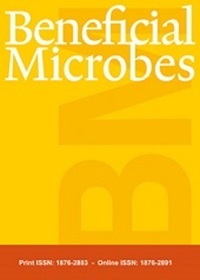用本地有益微生物混合物补充蜜蜂生产菌落
IF 3.1
4区 医学
Q2 MICROBIOLOGY
引用次数: 1
摘要
蜂群形成了一个复杂的超级有机体,个体和社会的免疫防御控制着整个蜂群的健康。有时这些防御不足以克服寄生虫和病原体的感染。出于这个原因,已经进行了几项研究来评估改善蜜蜂健康的不同策略。正在研究的一种新的替代方法是利用有益微生物。在之前的一项研究中,我们从蜜蜂的原生肠道微生物群中分离并鉴定了细菌菌株。将4株昆氏芽孢杆菌混合在实验室模型中,以评估其对幼虫和成蜂的潜在有益作用。该有益微生物混合物是安全的;不影响免疫相关基因的表达,能降低幼芽孢杆菌感染后幼虫的死亡率,减少感染成蜂的小蝇孢子数。在本研究中,我们的目的是深入研究在野外条件下,这种有益微生物混合物对蜜蜂菌落的影响。在2015年、2017年和2019年的秋季或春季,使用冻干细菌细胞或新鲜培养物将混合物放入糖浆中,通过喷洒或喷洒和喂食,每周一次,连续三周。在给药前、1个月和3个月后分别评估菌落强度参数。同时收集不同样本,评估寄生虫和病原体的感染水平。结果表明,在一些试验中,施用有益微生物混合物可以减少或稳定蜜蜂或破坏瓦螨的感染,而在其他试验中则没有。然而,它没有改善蜂群的强度参数或蜂蜜产量。因此,当对蜜蜂有益的微生物进行测试时,实地研究可以改变游戏规则,并且应该进行细致的研究来测试它们的有效性。本文章由计算机程序翻译,如有差异,请以英文原文为准。
Supplementation of honey bee production colonies with a native beneficial microbe mixture
Abstract Honey bee colonies form a complex superorganism, with individual and social immune defences that control overall colony health. Sometimes these defences are not enough to overcome infections by parasites and pathogens. For that reason, several studies have been conducted to evaluate different strategies to improve honey bee health. A novel alternative that is being studied is the use of beneficial microbes. In a previous study, we isolated and characterised bacterial strains from the native gut microbiota of honey bees. Four Apilactobacillus kunkeei strains were mixed and administered in laboratory models to evaluate their potential beneficial effect on larvae and adult bees. This beneficial microbe mixture was safe; it did not affect the expression of immune-related genes, and it was able to decrease the mortality caused by Paenibacillus larvae infection in larvae and reduced the Nosema ceranae spore number in infected adult honey bees. In the present study, we aimed to delve into the impact of the administration of this beneficial microbe mixture on honey bee colonies, under field conditions. The mixture was administered in sugar syrup using lyophilised bacterial cells or fresh cultures, by aspersion or sprayed and feeder, once a week for three consecutive weeks, in autumn or spring 2015, 2017 and 2019. Colony strength parameters were estimated before the administration, and one and three months later. Simultaneously different samples were collected to evaluate the infection levels of parasites and pathogens. The results showed that administering the beneficial microbe mixture decreased or stabilised the infection by N. ceranae or Varroa destructor in some trials but not in others. However, it failed to improve the colony’s strength parameters or honey production. Therefore, field studies can be a game-changer when beneficial microbes for honey bees are tested, and meticulous studies should be performed to test their effectiveness.
求助全文
通过发布文献求助,成功后即可免费获取论文全文。
去求助
来源期刊

Beneficial microbes
MICROBIOLOGY-NUTRITION & DIETETICS
CiteScore
7.90
自引率
1.90%
发文量
53
审稿时长
>12 weeks
期刊介绍:
Beneficial Microbes is a peer-reviewed scientific journal with a specific area of focus: the promotion of the science of microbes beneficial to the health and wellbeing of man and animal. The journal contains original research papers and critical reviews in all areas dealing with beneficial microbes in both the small and large intestine, together with opinions, a calendar of forthcoming beneficial microbes-related events and book reviews. The journal takes a multidisciplinary approach and focuses on a broad spectrum of issues, including safety aspects of pro- & prebiotics, regulatory aspects, mechanisms of action, health benefits for the host, optimal production processes, screening methods, (meta)genomics, proteomics and metabolomics, host and bacterial physiology, application, and role in health and disease in man and animal. Beneficial Microbes is intended to serve the needs of researchers and professionals from the scientific community and industry, as well as those of policy makers and regulators.
The journal will have five major sections:
* Food, nutrition and health
* Animal nutrition
* Processing and application
* Regulatory & safety aspects
* Medical & health applications
In these sections, topics dealt with by Beneficial Microbes include:
* Worldwide safety and regulatory issues
* Human and animal nutrition and health effects
* Latest discoveries in mechanistic studies and screening methods to unravel mode of action
* Host physiology related to allergy, inflammation, obesity, etc.
* Trends in application of (meta)genomics, proteomics and metabolomics
* New developments in how processing optimizes pro- & prebiotics for application
* Bacterial physiology related to health benefits
 求助内容:
求助内容: 应助结果提醒方式:
应助结果提醒方式:


